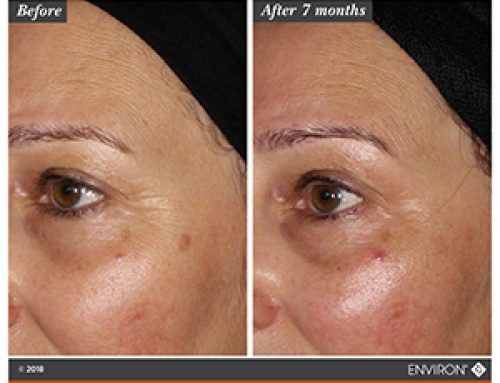So what has your gut got to do with your skin health?
About 70% of the body’s immune system can be found in our digestive tract! These cells have complex mechanisms for our protection and optimum immune function depends on the diversity of our gut bacteria! Likewise, the skin performs a barrier function for protection and temperature regulation. Like the gut lining it undergoes constant renewal. It is a major organ housing many immune cells. It appears changes in the gut and therefore immune system affect the skin in various which If will explore. (1)
The Gut
Research supports having a wide range of gut bacteria to promote health, because of the interdependent relationship we have with them! Unfortunately, stress, antibiotics, processed foods and fats disturb this delicate balance which affects our immune system increasing our risk for chronic inflammation and skin issues! (4) The bacteria produce energy to support the gut function and Vitamin B and k. (2) They also ‘eat’ the fibre we cannot digest causing bacterial fermentation that produces by-products called Short chain Fatty Acids (SCFA’s). These influence the health of the cells that make up the gut wall, glucose balance, lipid metabolism, appetite regulation, and immune function. They also regulate the intestinal environments by strengthening the intestinal wall which is a important barrier against intruders. (3)
Skin influencer
The gut microbiome appears to influence the skin microbiome as the by-products Short chain Fatty Acids (SCFA’s) are believed to play a crucial role in determining the dominance of certain skin microbes which influence the skins immunity.
- Immune cells communicate with each other potentially causing an inflammatory response in both gut and skin if the bacterial balance is shifted!
- By- products of the ‘good’ bacteria can suppress immune responses and regulate activation and cell death. Like taking out the internal garbage!(5)
- The intestinal microbiota influences ‘signaling pathways’ that synchronizes the epidermal formation and skin homeostasis.
- Disturbed intestinal barriers, bacteria and microbiota by-products may access the bloodstream, accumulate and disrupt skin balance. (6)
- The inhibition of inflammation promotes the rise of regulatory cells involved in various skin functions including regulation of hair follicle stem cells and wound healing. (7)
More and more research is showing links between the gut and the skin. Eczema in babies and children has been successfully reduced by the action of specific strains of ‘prebiotic’ bacteria. (8) A prebiotic is defined as “live microorganisms that, when administered in adequate amounts, confer a health benefit on the host” The Food and Agriculture Organization of the United Nations (FAO/WHO). A direct link has also been seen by finding the DNA of intestinal bacteria in the blood of patients with psoriasis and many links with bowel disease are just beginning to be explored. (9,10).
The growing research has emphasized the presence of a gut–brain–skin axis that connects gut microbes, oral probiotics, and diet. Diet also shapes the gut microbiota, evidence indicates that a low fibre-high fat western diet causes changes in the intestinal microbiota, producing metabolic and inflammatory skin diseases. Acne although dependant on many factors may also be rooted in gut imbalance. (11)
The challenging condition acne rosacea was often thought to be a result of excessive blood vessel dilation causing redness. Now it is emerging that it may actually begin with the gut mircrobe imbalance that affects immune regulation. (12)
So, with skin concerns including acne, pimples, dehydration, dryness and ageing it is worth considering the health of the gut. What’s more a healthy gut microbiome will support your immunity and increase your overall health and well being.
See my other skin blogs Book a Discovery call
- Salem I, Ramser A, Isham N, Ghannoum MA. The gut microbiome as a major regulator of the gut-skin axis [Internet]. Vol. 9, Frontiers in Microbiology.
- Kho ZY, Lal SK. The human gut microbiome – A potential controller of wellness and disease [Internet]. Vol. 9, Frontiers in Microbiology. Frontiers Media S.A.; 2018 [cited 2020 Aug 26].
- Short Chain Fatty Acid – an overview | ScienceDirect Topics [Internet]. [cited 2020 Sep 10]. Available from: https://www.sciencedirect.com/topics/neuroscience/short-chain-fatty-acid
- Cao C, Xiao Z, Wu Y, Ge C. Diet and skin aging—from the perspective of food nutrition [Internet]. Vol. 12, Nutrients. MDPI AG; 2020 [cited 2020 Aug 6].
- Poretsky RS, Sabree ZL, Chassaing B, Bernstein CN, Forbes JD, van Domselaar G. The Gut Microbiota in Immune-Mediated Inflammatory Diseases. 2016;
- Meisel JS, Sfyroera G, Bartow-Mckenney C, Gimblet C, Bugayev J, Meisel JS;, et al. Commensal microbiota modulate gene expression in the skin Recommended Citation. [cited 2020 Sep 10]; Available from: https://digitalcommons.wustl.edu/open_access_pubs
- Samuelson DR, Welsh DA, Shellito JE. Regulation of lung immunity and host defense by the intestinal microbiota [Internet]. Vol. 6, Frontiers in Microbiology. Frontiers Media S.A.; 2015 [cited 2020 Sep 10]. p. 1085.
- Makrgeorgou A, Leonardi-Bee J, Bath-Hextall FJ, Murrell DF, Tang MLK, Roberts A, et al. Probiotics for treating eczema [Internet]. Vol. 2018, Cochrane Database of Systematic Reviews. John Wiley and Sons Ltd; 2018 [cited 2020 Oct 10]. p. 6135.
- Ely PH. Is psoriasis a bowel disease? Successful treatment with bile acids and bioflavonoids suggests it is. Clinics in Dermatology. 2018;36(3).
- Padhi T, Garima. Metabolic syndrome and skin: Psoriasis and beyond. Indian Journal of Dermatology. 2013 Jul;58(4):299–305. doi: 10.4103/
0019-5154.113950. - Lee, Byun, Kim. Potential Role of the Microbiome in Acne: A Comprehensive Review. Journal of Clinical Medicine [Internet]. 2019 Jul 7 [cited 2020 Oct 10];8(7):987. doi: 10.3390/jcm8070987
- Weiss E, Katta R. Diet and rosacea: the role of dietary change in the management of rosacea. Dermatology Practical & Conceptual. 2017 Oct 31;7(4):31–7. DOI: https://doi.org/10.5826/dpc.0704a08







